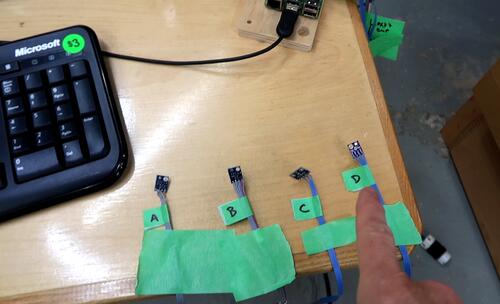
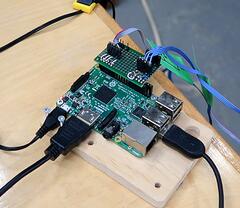 I got a lot of comments on my vacuum clamping video that I need some
sort of cloth on top to Allow the vacuum to spread. But I wasn't so
sure about that so I thought I'd set up an experiment to investigate.
I got a lot of comments on my vacuum clamping video that I need some
sort of cloth on top to Allow the vacuum to spread. But I wasn't so
sure about that so I thought I'd set up an experiment to investigate.

 I got a lot of comments on my vacuum clamping video that I need some
sort of cloth on top to Allow the vacuum to spread. But I wasn't so
sure about that so I thought I'd set up an experiment to investigate.
I got a lot of comments on my vacuum clamping video that I need some
sort of cloth on top to Allow the vacuum to spread. But I wasn't so
sure about that so I thought I'd set up an experiment to investigate.
I wired four BMP280 barometric pressure sensors to a Raspberry Pi computer so I could measure the vacuum on different spots over my workpiece.
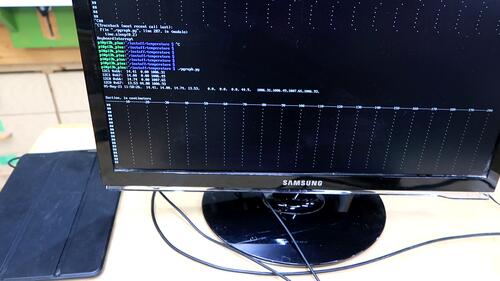 I wrote a Python script to continuously read those 4 sensors and graph the
results on the screen using ASCII graphics.
I wrote a Python script to continuously read those 4 sensors and graph the
results on the screen using ASCII graphics.
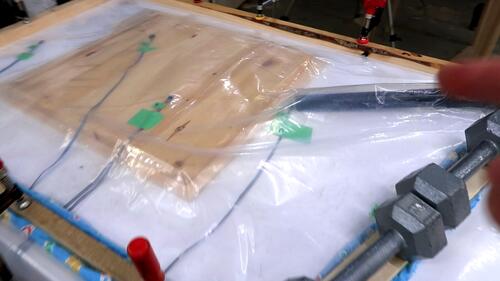 I then placed the sensors around a stand-in for a workpiece
consisting of two wood panels on top of each other underneath
the plastic foil
I then placed the sensors around a stand-in for a workpiece
consisting of two wood panels on top of each other underneath
the plastic foil
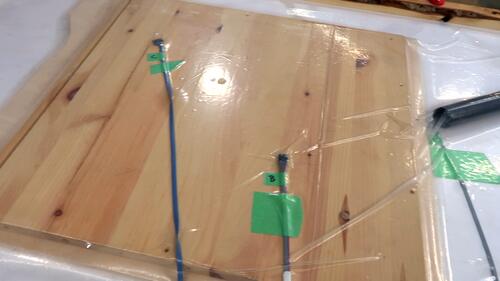 I then sucked the air out using the same blower that I used last time.
I then sucked the air out using the same blower that I used last time.
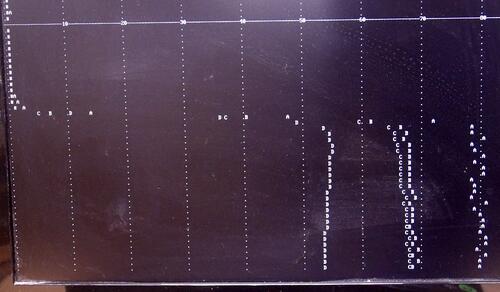 At left the ASCII graph from my initial experiment.
Each vertical line of dots represents 10 centimeters of water column
height equivalent pressure (1 kilopascal).
The letter A is for readings right at the end of my vacuum hose.
At left the ASCII graph from my initial experiment.
Each vertical line of dots represents 10 centimeters of water column
height equivalent pressure (1 kilopascal).
The letter A is for readings right at the end of my vacuum hose.
Letters B and C are the two sensors on top of the work piece and letter D is another sensor left of the workpiece
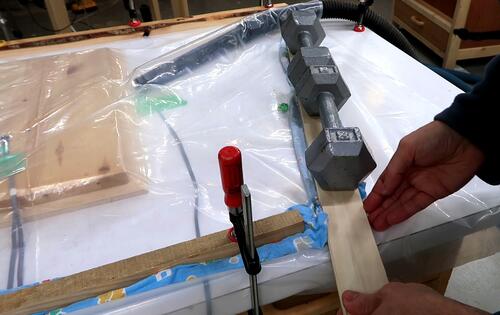 Somehow the full vacuum wasn't getting from the end of the hose
To the top with a workpiece. I figured this must be caused by
some leakage on the right side somewhere around the hose.
So I made some adjustments to the cloth wood and weighing
the plastic down on this side.
Somehow the full vacuum wasn't getting from the end of the hose
To the top with a workpiece. I figured this must be caused by
some leakage on the right side somewhere around the hose.
So I made some adjustments to the cloth wood and weighing
the plastic down on this side.
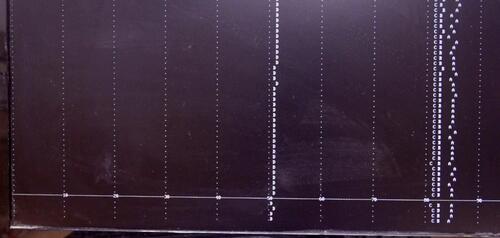 With those adjustments, and plugging up some of the
area around the hose, the vacuum readings on top of the workpiece
were getting very close to the readings at the hose.
With those adjustments, and plugging up some of the
area around the hose, the vacuum readings on top of the workpiece
were getting very close to the readings at the hose.
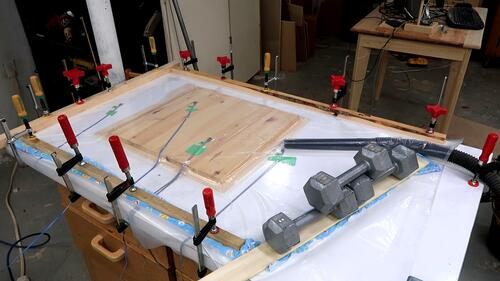
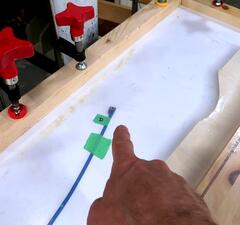 But the vacuum reading from my sensor to the left of the workpiece
was still much lower
But the vacuum reading from my sensor to the left of the workpiece
was still much lower
With the plastic firmly sucked down to the workbench, there wasn't much air flow there but I figured there must be some leakage Where I clamped the plastic down with a piece of wood on the very left side.
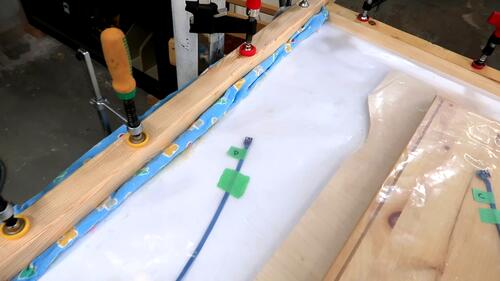 Sorry I added some soft fabric underneath the wood there to even out
the pressure on the plastic
Sorry I added some soft fabric underneath the wood there to even out
the pressure on the plastic
After that the vacuum reading on that sensor was about 3/4 of the vacuum reading on top of the workpiece, So leakage on the left edge was the source of the problem. And I'm sure I hadn't entirely eliminated that leakage.
Of course I could easily eliminate leakage by taping down the edges but I didn't want to mess with tape Because I would have to redo the tape every time I open it up to make changes.
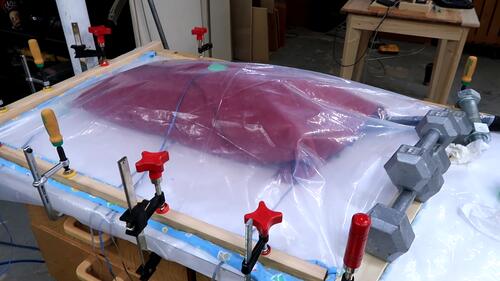 The next thing I wanted to try was clamping down something
that wasn't flat: a pillow.
The next thing I wanted to try was clamping down something
that wasn't flat: a pillow.
A challenge with non flat objects is inevitably there's going to be wrinkles around the edges from draping the plastic over the object, And those wrinkles, even if clamped flat, will cause extra leakage.
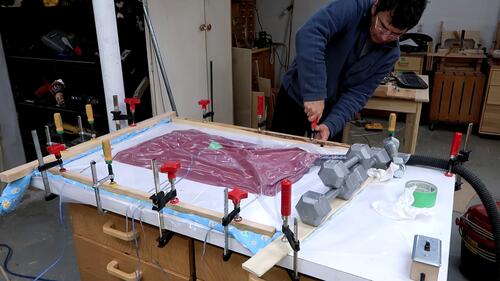 I sucked the air out using my blower as before.
But I was getting less vacuum than before.
I sucked the air out using my blower as before.
But I was getting less vacuum than before.
Then I realized I forgot the clamp the piece of wood on the back in the middle, so it's actually surprising I got as much vacuum as I did without having that clamped down firmly.
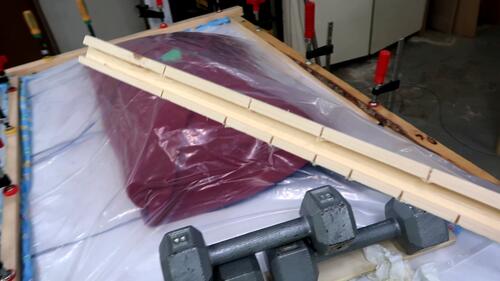 But the other problem I was running into was that even though the pilow
is made out of foam, the air wasn't getting through it very well.
As it got squished down on the bench, it did a good job of sealing off
the air flow.
But the other problem I was running into was that even though the pilow
is made out of foam, the air wasn't getting through it very well.
As it got squished down on the bench, it did a good job of sealing off
the air flow.
So I added this hollow channel along one side to spread the vacuum better.
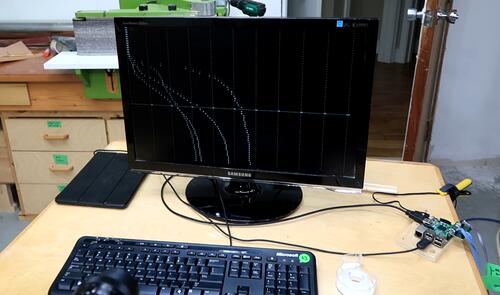 With that I was getting much better vacuum, although it took a while for
the vacuum to build up as the pillow compressed.
With that I was getting much better vacuum, although it took a while for
the vacuum to build up as the pillow compressed.
But just for fun I used the vacuum cleaner to suck the air out of the blower to get even more vacuum. That pillow, even though it's a firm pillow, got squished really flat.
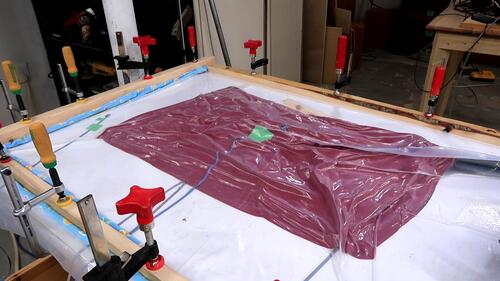 But with a pillow I had no such hollow channel around the edges.
And because of the wrinkles in the plastic this time, I probably had more
leakage around the edges.
But with a pillow I had no such hollow channel around the edges.
And because of the wrinkles in the plastic this time, I probably had more
leakage around the edges.
So I think some sort of permeable fabric on top to distribute the vacuum can be useful but it's really not very necessary as long as there is a way for the vacuum to get around the edges of the workpiece. That's because there's very little leakage through the plastic itself, so the air will get sucked out between the workpiece in the plastic in time.
A hollow channel around the edges of the workpieces is much better. Certainly the fabric that is part of the pillow was not enough for the vacuum to spread itself effectively vs. the leakage I had around the edges.
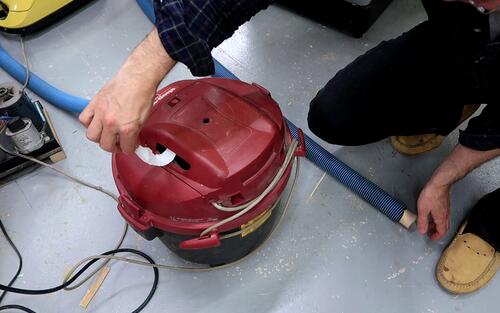 The other comment I got many times is that I'd ruin my shopvac
Because there wouldn't be enough air flowing through it to cool the
motor.
The other comment I got many times is that I'd ruin my shopvac
Because there wouldn't be enough air flowing through it to cool the
motor.
But all the shop vacs I've ever used have a separate fan for a motor cooling air and that isn't a completely separate circuit so the air that sucked in through the hose is not the air that cools the motor. (more on that)
So I can stall the air flow as long as I want it without having to worry about overheating the motor.
That said, these shopvacs aren't built to last so I wouldn't want to leave it running for five hours straight unattended.
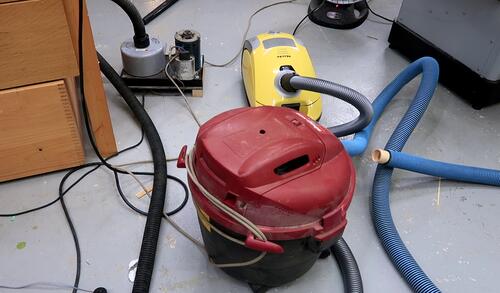 I also measured the static pressure of the blower hours using a shop vac
and my wife's yellow Miele vacuum cleaner.
My blower gave me about 9 kilopascals, equivalent to
90 cm or 35" of water column height.
With the shop vac I got 12 kilopascals or about 120 cm or 48" equivalent
water column height.
I also measured the static pressure of the blower hours using a shop vac
and my wife's yellow Miele vacuum cleaner.
My blower gave me about 9 kilopascals, equivalent to
90 cm or 35" of water column height.
With the shop vac I got 12 kilopascals or about 120 cm or 48" equivalent
water column height.
But my wife's Miele vacuum cleaner was able to suck 20 kilopascals, equivalent to 2 meters of water column Heights or 80 inches. So that vacuum sucks about 20% of atmospheric pressure very impressive. No wonder it did such a good job sucking out the contents of eggs.
Is too bad the Miele needs some amount of air flow through the hose to cool the motor, so I'd have to bleed a little bit of air if I was using it for vacuum clamping. But it would be tempting to buy one for the shop if I was doing a lot of vacuum clamping. For something that says "Miele" on it wasn't that expensive ($320 Canadian back in 2016).
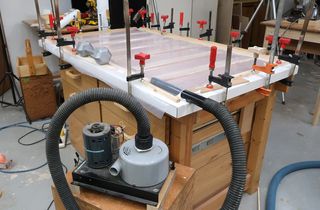 Vacuum clamping
to make a corkboard (2021)
Vacuum clamping
to make a corkboard (2021)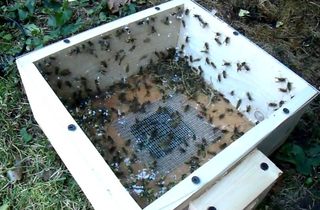 Wasp sucking machine (2011)
Wasp sucking machine (2011)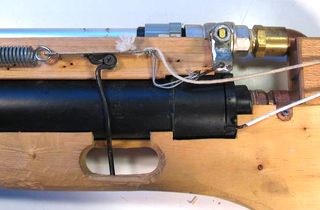 Homemade airgun (2011)
Homemade airgun (2011)